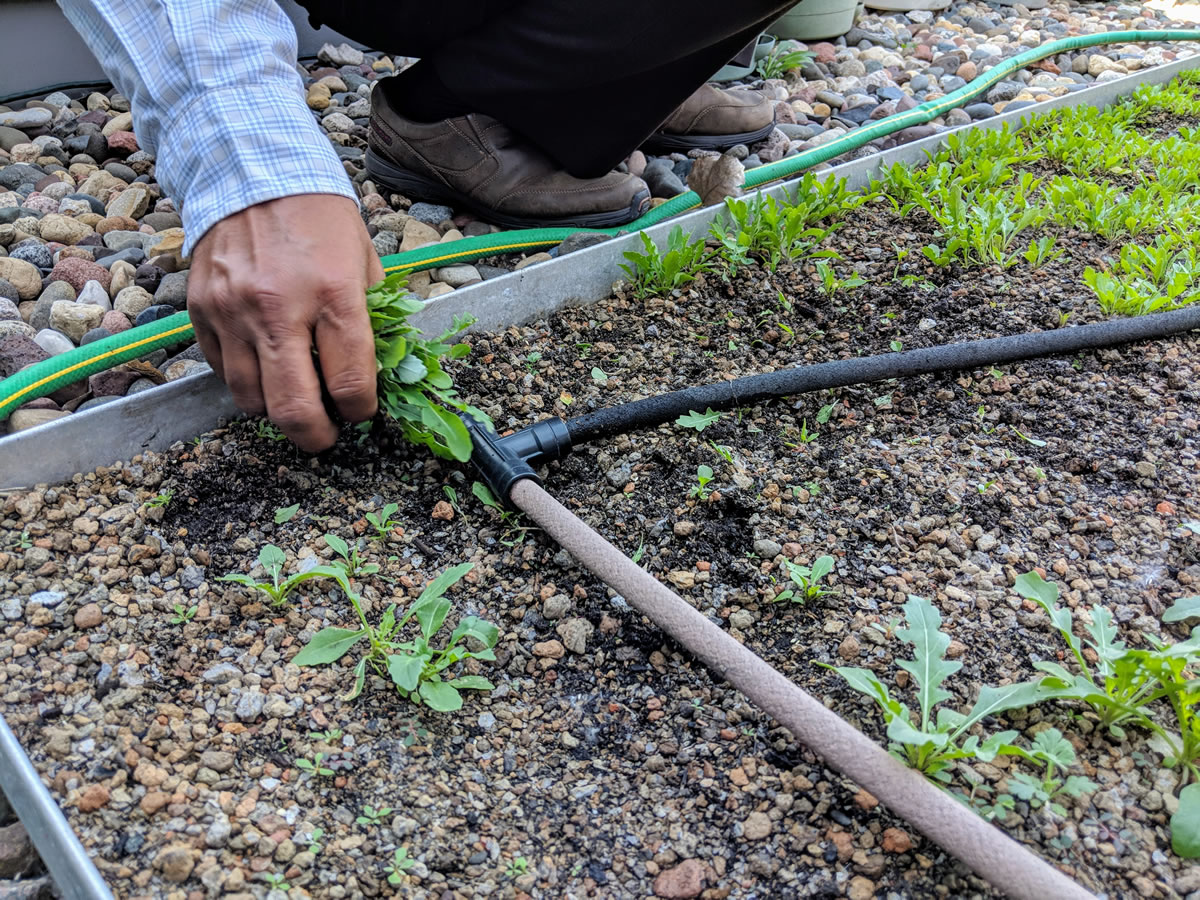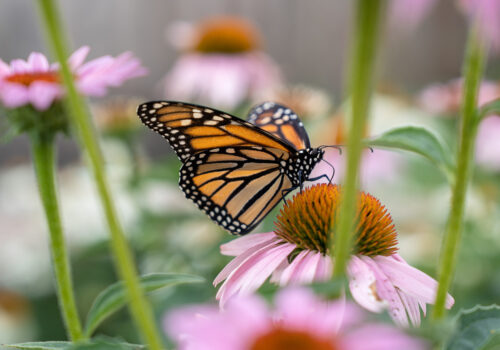Green Roofs and the Art of Gardening in Unconventional Spaces
Summer is our busy season here at the MWMO. Not only is it the season when a lot of our projects begin construction, but it’s also the start of one of our staff’s favorite activities: our green roof growing season.
Since moving into our building, we have been using our green roof as a growing space for herbs, vegetables, and flowers. Among the plants that seem to grow best in our rooftop garden’s hot, windy conditions are strawberries, green beans, chives, numerous types of lettuce, and even marigolds. Gardening on our green roof has been a learning experience for us — one that yields some nice perks, like having fresh vegetables at lunchtime.
In addition to serving as gardens and green spaces, green roofs offer some significant environmental benefits. With trees filling out and plants starting to grow, we wanted to share with you a little more about what a green roof is, how we use ours, and a few urban gardening tips to try out on your own this year.
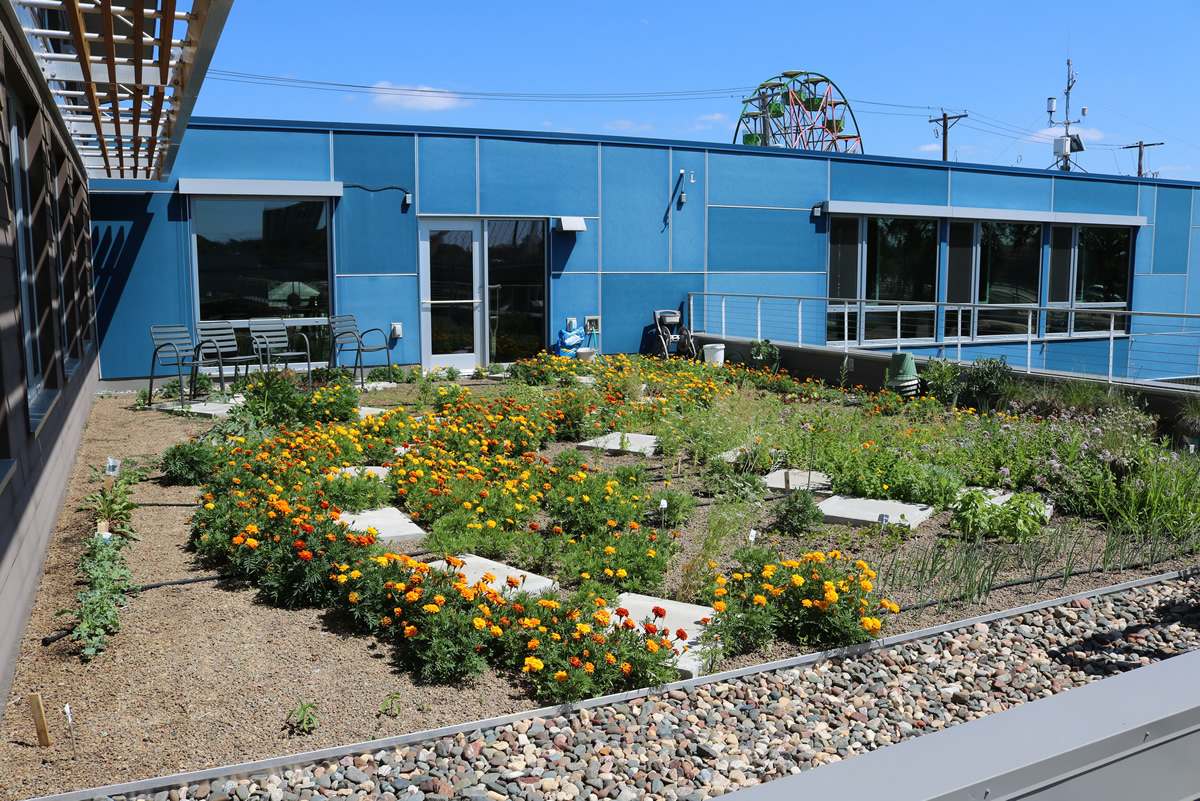
What is a Green Roof, Anyway?

A green roof, sometimes also called a living roof or eco-roof, is a roof on a building that is partially or completely covered by some form of vegetation. Green roofs have been around for centuries, often used in ancient times to help keep buildings warm or cool (depending on the season), which isn’t all that different from how they are used today. Green roofs can support a wide variety of vegetation, from low-maintenance, pollinator friendly plants to higher-maintenance vegetable gardens.
Unlike the green roofs of ancient times, today’s modern green roofs have a more complex construction. Most are comprised of multiple layers in order to provide not only structural support, but also growing space for plants. The upper layers include plants, soil, and a filter to keep the soil from washing away. The middle layers include a drainage system, insulation, and a root stop/waterproof sheet to prevent both water and plant roots from penetrating the building below. Finally, the bottom layers include the roof membrane and roof deck (similar to typical roofs) but are engineered to support the extra weight of the green roof above. These layers can vary from roof to roof, depending on what is grown and how deep the soil is.
There are two basic types of green roofs: intensive and extensive. Intensive green roofs are much more robust and support plants as big as trees and shrubs. Once established, they require less ongoing maintenance. Extensive roofs, by comparison, are much shallower and support plants such as herbs, vegetables, and grass. Extensive green roofs require more ongoing maintenance. The green roof here at MWMO is an extensive green roof, having a shallow root depth (only about 4 inches deep) that we use to primarily grow herbs and vegetables.
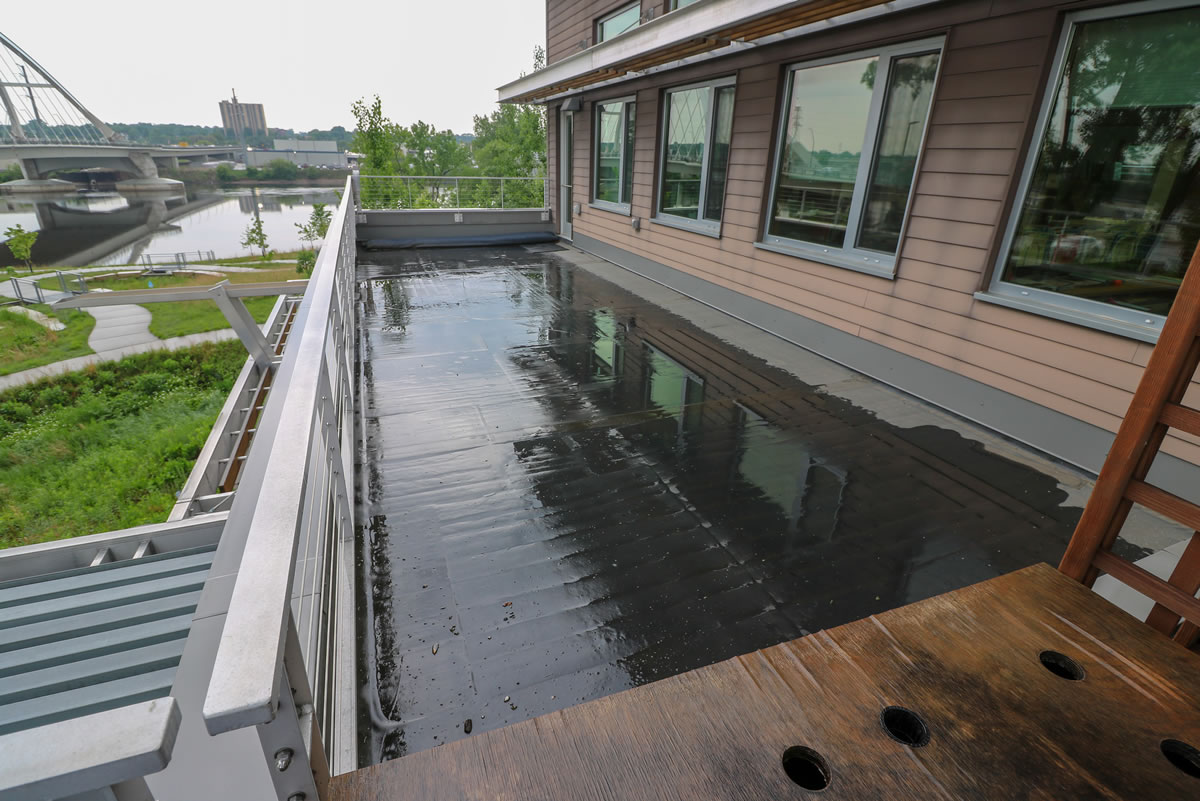
Green Roofs Aren’t Just Green Space
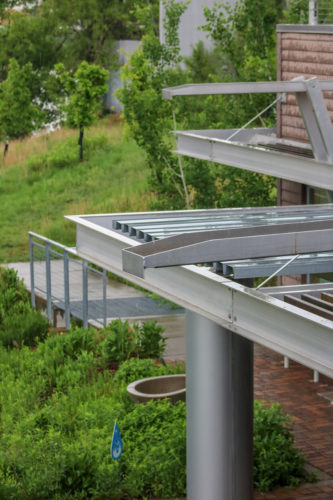
While green roofs can be more costly to build and require special engineering, they serve several eco-friendly purposes. The MWMO’s green roof was built primarily to illustrate one in particular: stormwater management.
Our green roof sits side-by-side to a traditional blacktop roof. On rainy days, we can see the stormwater benefits directly by observing the runoff from our green roof and comparing it to the runoff from the traditional rooftop. During storm events, we often see little to no water running off the green roof while the traditional roof, by comparison, has a steady stream of stormwater running off of it.
Hours after the storm has passed and the green roof’s soil has been saturated, we can observe the green roof slowly draining water to the raingarden below, while the traditional roof is often completely dry. In this way, the green roof slows the flow of stormwater runoff while allowing us to capture some of it and put it to good use.
The MWMO also benefits in other ways from our green roof. Green roofs reduce energy costs by providing insulation, and by reflecting and absorbing solar radiation. In the summer, this not only helps keep our building cool, but also helps reduce the urban heat island effect. By comparison, traditional blacktop roofs provide little insulation and merely re-emit energy from the sun’s rays as heat. Finally, green roofs also provide important habitat benefits for both animals and people. Depending on the type of roof that is installed, the vegetation grown on a green roof also benefits pollinators, birds, and other insects — while providing an inviting and relaxing space for humans.
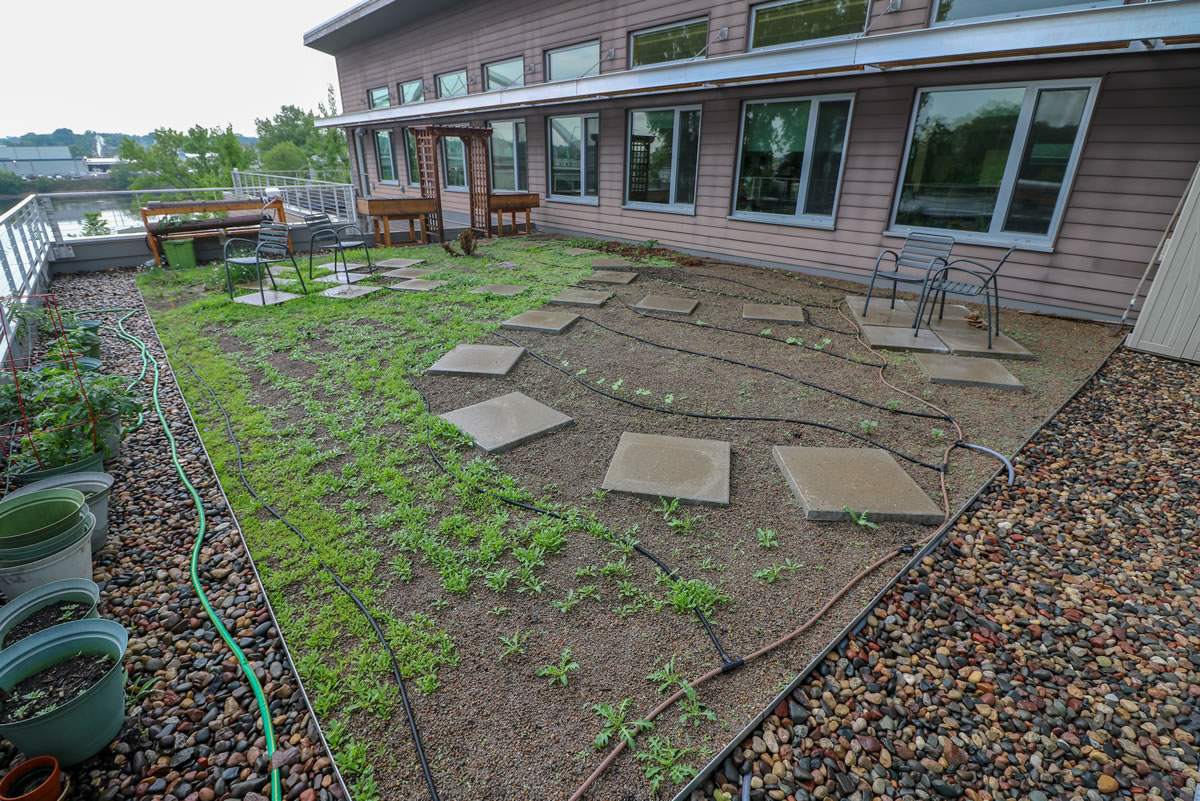
Rounding Out the Garden: Other Ways to Grow Food

In addition to our green roof itself, we at the MWMO also have a hydroponic system and about a dozen potted plants scattered around the perimeter of our rooftop garden. The plants we grow in these systems are ones that we can’t plant directly on the roof because of how deep their roots get, such as peppers and tomatoes. Deeper root systems pose a danger to the roofs membrane because puncturing this would allow water to get into the building, so we have to pay careful attention to what we plant on our roof and where.
Gardening with pots and hydroponic systems is also a great solution for small spaces at home, or for people who live in apartments and don’t have access to a traditional garden. Pots are nice because they are very easy to maintain and fit well on small patios or balconies. When using pots, keep in mind that plants have different needs in terms of growing space, temperature, and sunlight. Do some research and be sure to pick plants that are well-suited for this type of growing.
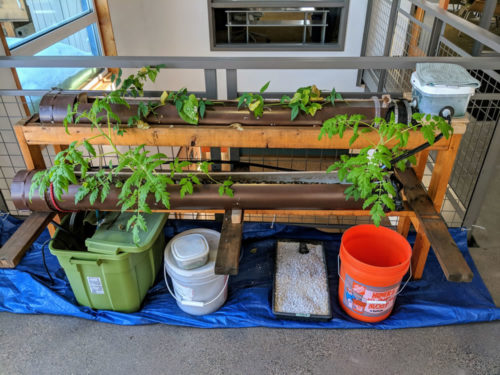
Hydroponic gardening involves growing plants in a liquid nutrient solution instead of in soil. It might sound complicated, but it can be easily done at home. The hydroponics system we use was built to maximize the vertical space used to grow food, but there are many different types of systems out there. This video shows you how to construct a smaller and cheaper version of our system. Home and garden retailers also offer hydroponics kits you can purchase.
In addition to pots and hydroponic systems, another space-saving garden option is to build a raised bed or planter. These are easy to manage and provide more flexibility than pots. Raised beds or planters can also be used to frame spaces such as patios and create a comfortable atmosphere to enjoy all summer-long.
Community gardens are yet another great option for city dwellers. The benefit of these gardens is they are usually well-established. There are often experienced gardeners available to help if you’re new to growing your own food. To find the closest one to you, check out Gardening Matters. If you don’t see one in your area, check with your local city or neighborhood organization about starting one. You might be surprised how many people would be interested in joining you!
No matter your level of experience gardening, there are plenty of ways out there to start growing your own fresh herbs and vegetables. What are you going to try this summer? Share your own tips and tricks in the comments below!
